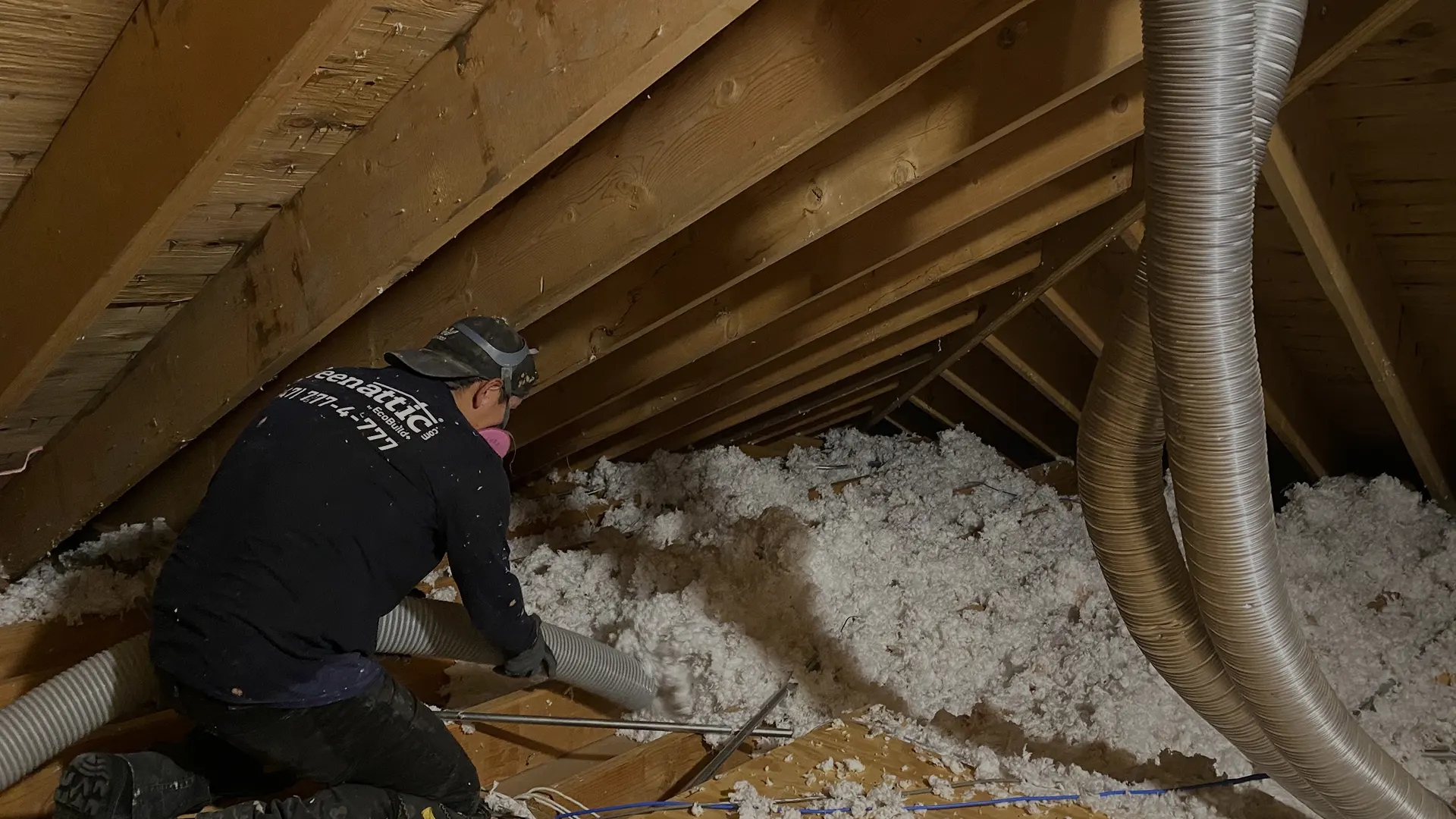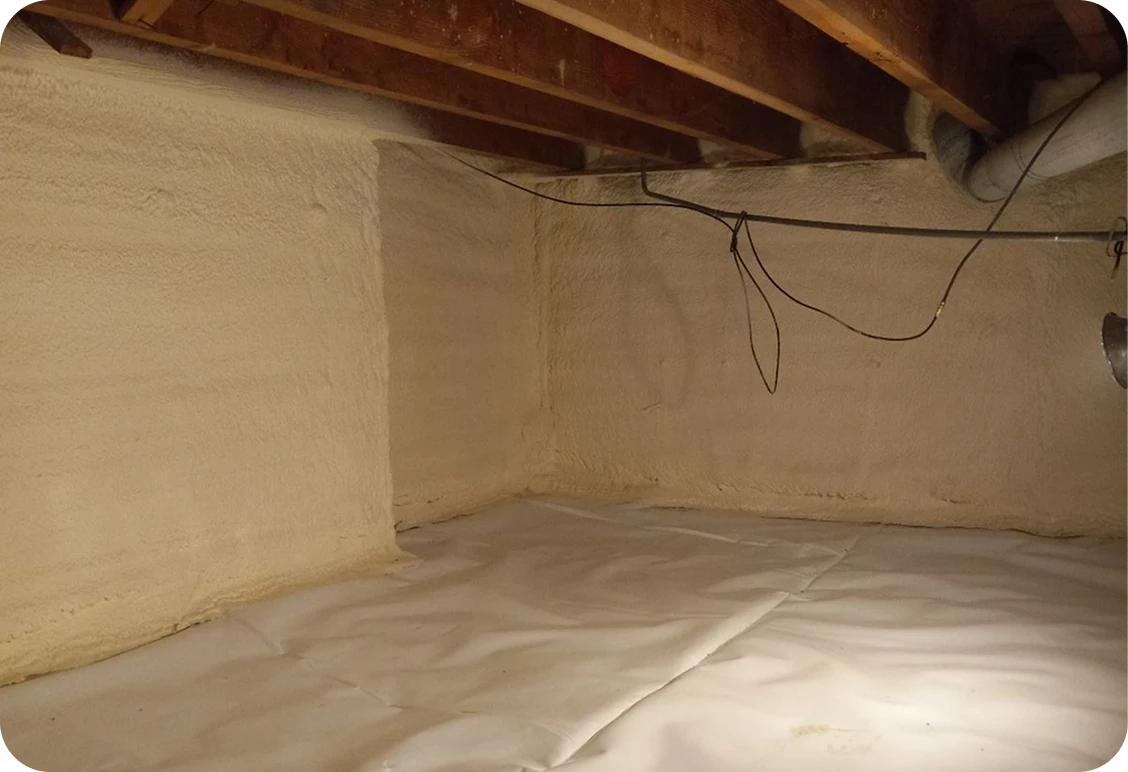
Remove Insulation From Attic






Request a Quote Today

When Insulation Removal May Not Be Necessary
If you have mold in the attic, it is possible for your existing attic insulation to remain in the house as long as there are no signs of mold growth on the insulation and the insulation is treated at the same time as the rest of the attic to kill all the mold spores and prevent it from regrowing.
Even if your insulation has compressed over time, it still provides thermal resistance and can be supplemented with additional layers to improve your home's overall energy performance. Existing insulation can remain and benefit your retrofit attic upgrades in 4 ways:
✓ Increased R-Value
✓ Decreased Removal Costs
✓ Decreased Labor And Material Costs
✓ Less Landfill
We're committed to finding cost-effective and environmentally responsible solutions by preserving existing materials whenever it's safe and practical to do so.
.jpg)

Insulation That Has Settled
Insulation that has settled still has thermal resistive properties that add to the overall R-value once new insulation is added.
By leaving the old insulation intact, you are also leaving the original vapor barrier intact, as long as it was installed properly during the original installation.
However, air sealing the attic floor with fireproof foam will need to be done before new the insulation is installed to increase efficiency and prevent moisture from inside the house.

After the gaps are sealed, they will install the baffle for proper ventilation and install up to 16-18 inches of cellulose to get an initial R-value of R60.
All insulation will settle, so an experienced professional will know to compensate for the settling by installing an extra 2 inches of cellulose insulation. Extra insulation will also be valuable in any future work that needs to be done in the attic as it can be disbursed to the areas that are worked on.
Vapor Barrier
For blown-in fiberglass insulation, you should see a plastic membrane or other vapor impermeable material installed to help stop the exposure of moisture to your insulation.
Moisture will reduce the R-value (a measure of thermal resistance) of your insulation over time. This is another reason it is important to have a professional inspect your attic to ensure your vapor barrier is not damaged or missing.
When using blown-in cellulose insulation, a vapor barrier is not needed as it acts as a natural vapor barrier and will restrict the flow of vapor in the attic.
It is always important to make sure the attic is properly ventilated to decrease moisture build-up. In some cases, it may be necessary to add supplemental ventilation in the form of an attic vent/fan.

What Type of Insulation Should You Use After Removal?
This is important because wood has a low R-value, meaning it transfers heat very easily. By encapsulating the floor joist with insulation, thermal bridging (the transfer of heat) is eliminated making the insulation more effective.
The most common types of blown-in insulation are fiberglass and cellulose. Cellulose is a great alternative to blown-in fiberglass insulation because it is healthier, eco-friendly, and will resist mold growth while having similar, if not greater thermal resistive properties (higher R-value) than blown-in fiberglass insulation.

Spray Foam Removal
Even when it is applied properly, there are many situations where spray foam is not the most appropriate product to be used on the attic rafters. Many spray applied foam insulations pose fire hazards and make it hard to identify roof leaks since spray foam is applied to the underside of the roof decking.
If your foam insulation in the attic smells bad, it may have been applied at the wrong temperature, installed too thick, or not applied properly at the time of installation. Another cause for complications with spray foam in the attic is roof leaks.
Spray foam insulation can cause the water to be trapped between the foam and the roof decking, creating a potential for the roof decking material to rot. It is imperative to schedule a spray foam insulation removal and replacement if there has been water damage.




















.svg)
.svg)
.svg)
.svg)
.svg)
.svg)
.svg)
.svg)
.svg)
.svg)
.svg)
.svg)
.svg)
.svg)

.svg)
.svg)
.svg)
.svg)
-1.svg)
.svg)
.svg)
















